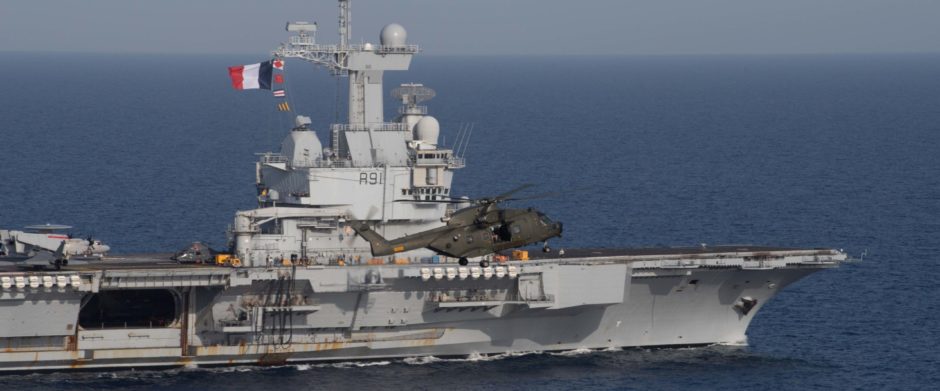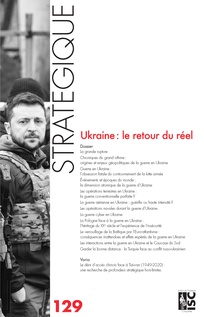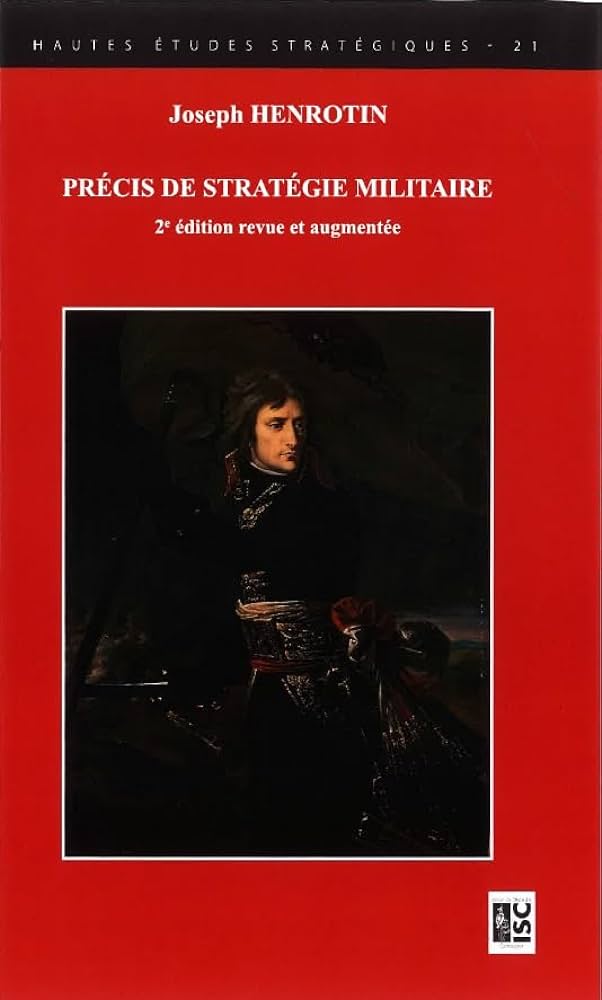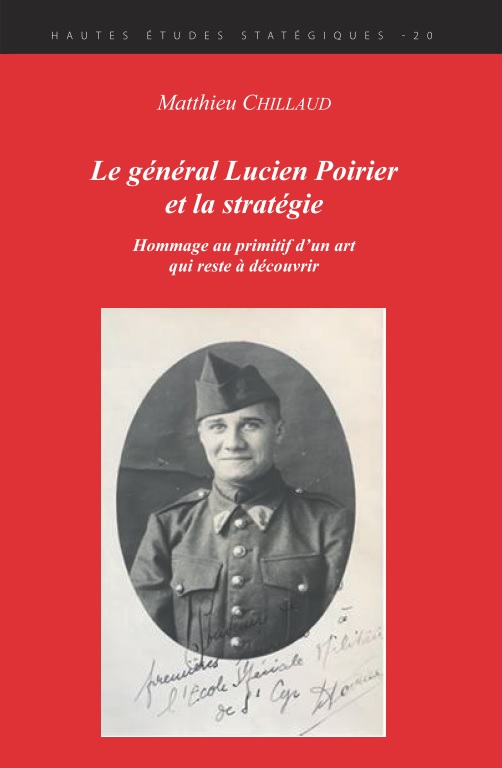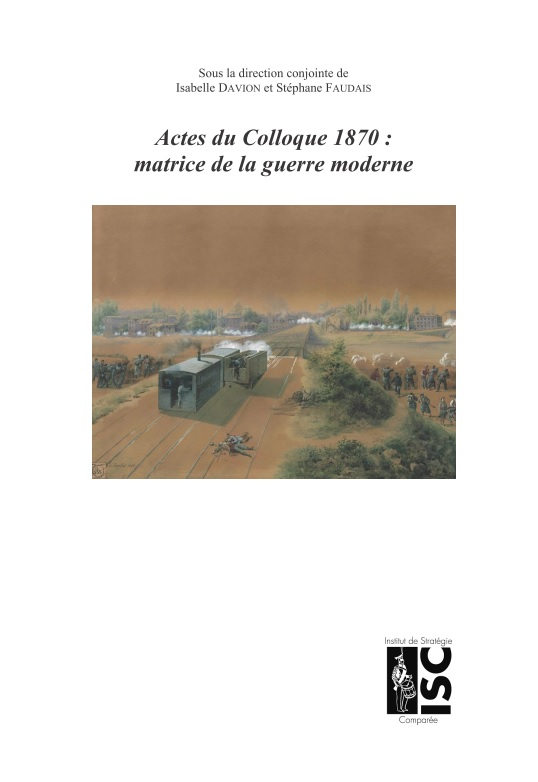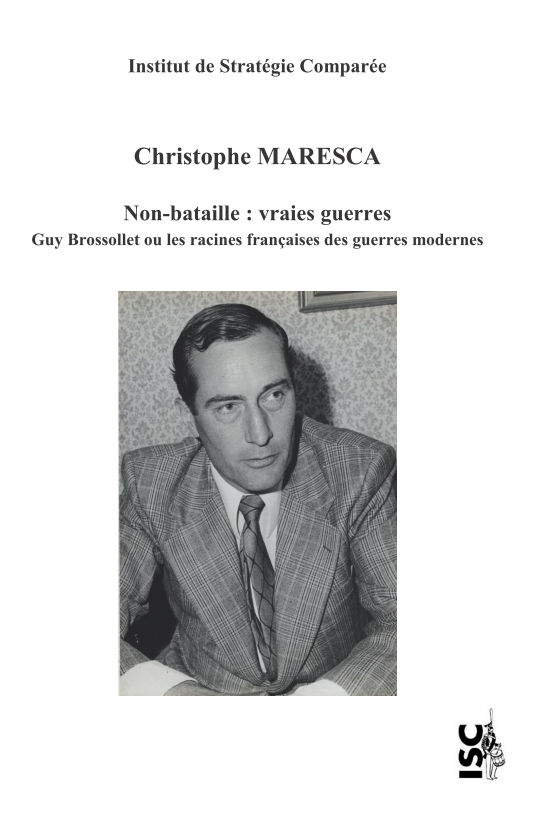A short history of the Lafayette Escadrille and the Lafayette Flying Corps will be provided here to refresh the reader of its origins, its accomplishments, and its contributions to the war effort. This history will not be extensive, and will only provide a brief synopsis of the unit. The purpose is not to recreate the history of the Lafayette Escadrille — that can be found elsewhere.
The Origins of the Lafayette Escadrille
As the armies of Europe clashed in August of 1914, America decided to remain neutral. This did not sit well with some of its citizens who believed that America should choose to side with one or the other belligerents. American citizens for a variety of reasons rushed to join both sides of the fighting. Some of the American men, whether finding themselves in Europe at the start of the war or after reaching Europe in a variety of other ways, sought a way to aid in the fight. Some felt the call due to a strong sense of right and liberty; some were adventurous and sought their fame and fortune; and still others were just idle, young men — but whatever the case, they came in order to fight or to volunteer their services.
The question of neutrality was an issue for these Americans, and preserving their citizenship was another one. President Woodrow Wilson of the United States had declared,
“No person within the territory and jurisdiction of the US shall take part, directly or indirectly, in the war, but shall maintain strict and impartial neutrality.” 1
Articles 6, Chapter 1, Convention V of the 1907 Hague Convention, had expressly addressed the issue of foreign nationals fighting for other countries; persons were permitted to offer their services to one of the belligerents without penalty. However, Article 4 of the same Convention, disallowed countries from recruiting corps of candidates from neutral countries. Furthermore, an American law passed in 1907 declared that any American that enlisted in or took an oath to a foreign service “shall be deemed to have expatriated himself.” 2
The French, in order to skirt the citizenship issue, agreed that joining the French Foreign Legion one did not forfeit one’s citizenship since the oath of allegiance was not made to another country, just to the fighting unit itself. A few hardy Americans found their entrance into the French forces in this fashion. 3
Early in the conflict, a few Americans fighting in the Foreign Legion came up with an idea to start a unit of volunteer American aviators. The origins of this idea are generally credited to Legionnaire William Thaw, who had been a pilot before the war. At the same time, a young man named Norman Prince was also independently toying with the idea. Prince had lived on and off in France for most of his young life and his father held land in Pau in the south of France. His idea was to form an American squadron in the French Aeronautic Service, using as a nucleus several other fellows that were akin to the idea, including the volunteer legionnaires that he had encountered upon his arrival to France, men such as William Thaw, Elliot Cowdin, Frazier Curtis, Bert Hall and Didier Masson. 4
Prince had to come to France in early 1915 and due to his father’s influence and wealth, set about trying to act upon his idea for an aviation unit. His efforts were at first rebuffed since the neutrality of the Americans was an issue and since the nascent aviation service of France had more than enough pilots of its own. Eventually Prince met a Mr. Jarousse de Sillac who became enamored with the young man’s idea. Mr. de Sillac, who was the Under-Secretary of the French Ministry of Foreign Affairs, was in a position to make this idea known, and in February of 1915 persuaded the Ministry of War to allow Americans to enlist in French Aviation. At the end of March 1915, pilots Thaw, Hall, Cowdin, Curtis, Prince, and James Bach were assigned to French aviation schools while details of the unit to be were worked out. 5
Concurrently, and independent of Prince’s and the others’ efforts, another Paris-based American named Dr. Edmund Gros, one of the men in charge of the American Ambulance Corps, had had a similar idea of organizing an American flying unit. He had thought that many of the volunteers he had met in the ambulance corps would be excellent candidates for pilots, and so he set about using his contacts and prestige in Paris to formulate a flying unit. 6
Dr. Gros had met Curtis and some of the other fledgling aviators, and through them, Mr. de Sillac. Mr. de Sillac and Gros began fomenting the enthusiasm and support necessary to realize their idea. Finally on July 8, 1915, General Hirschauer, Chief of French Military Aeronautics, met with Dr. Gros and Mr. De Sillac. Although at first completely opposed to the idea of a group of American flyers at the front due to diplomatic reasons, he saw the benefits of having such a unit. He agreed to the formation of an American squadron, to be known as the “Escadrille Americaine.” 7
It was not until April 1916, that the unit was actually stood up and designated as “Nieuport 124” or “N-124,” an “escadrille de chasse” or pursuit squadron. On March 21, 1916, official orders were received from the Department of Aeronautics, stating that the Commander in Chief had finally approved the formation of N-124, but it would take a while to assemble the American pilots. The pilots who would form the nucleus of the new unit were scattered throughout schools in France at Buc, Pau, and Avord, and some of them like Thaw had already been flying with French units at the front. The candidates were assembled at Plessis Belleville. Captain Georges Thenault would command the squadron; his second in command was Lieutenant deLaage de Meux. These seven men are the original pilots of the Lafayette Escadrille: William Thaw, Elliot Cowdin, Kiffin Rockwell, Norman Prince, Bert Hall, Victor Chapman and James Rogers McConnell. Eugene Curtis, slated to join the unit, was injured in a training accident and unable to fly anymore; and James Bach crashed and became a prisoner of war. 8
To support the unit which had begun to attract a great deal of attention, Dr. Gros and Mr. de Sillac founded the “Franco-American Committee” (later to become the “Franco-American Flying Corps”), a committee designed to handle the finances and business of the Americans since they would need support in addition to what the French gave them for uniforms, expenses, and sundries. It was composed of Dr. Gros, Mr. de Sillac, and various wealthy benefactors and American businessmen of high standing like William K. Vanderbilt and J. Pierpont Morgan; these men would fund, outfit, and provide for the well being of the Escadrille Americaine pilots. 9
The Franco-American Flying Corps also facilitated the way for potential American flying candidates. A special form of enlistment was adopted by the French which allowed the candidate to enlist but which also unequivocally gave him the right to return to the United States without penalty or cost should he turn out to be inept as a flyer. As to the question of citizenship, the candidate was also allowed to forego swearing allegiance to the French, although he had to promise to obey orders and to submit to discipline — ensuring his American nationality. 10
The Germans protested the move based on America’s neutrality and demanded that the reference to America in the Escadrille Americaine be dropped. The French shortly thereafter changed the name to the “Escadrille de volontaires.” But since the American men hated that title, they were allowed to change its name to the diplomatic, yet still very symbolic, “Lafayette Escadrille.” It was officially accepted. 11
The Squadron in Combat
The Lafayette Escadrille would ultimately be transferred eleven times and serve in nine different locations in its approximate twenty-three months of service at the front in order to be near the majority of the fighting. Consequently, it would fly over every sector of the Western Front. See Maps One and Two. 12
The unit was originally stationed at Luxeuil-les-Bains, an ancient spa town at the foot of the Vosges Mountains near the Swiss border from April 20 to May 19, 1916. The squadron shared the airfield with British aviators of the Royal Naval Air Service and the units were assigned to protect Captain Felix Happe’s Farnam and Bequet bombers on raids. The squadron flew its first official patrol on May 13 and scored its first victory by Kiffin Yates Rockwell on May 18 when he shot down a reconnaissance plane. 13
The unit moved to Bar-le-Duc, Verdun Sector from May 19 to September 14, 1916, in order to take part in the Verdun Battle where it became part of Groupe de Combat 12. Raoul Lufbury, Clyde Balsley, Chouteau Johnson, Lawrence Rumsey, Dudley Hill, Didier Masson, and Paul Pavelka joined the squadron at Bar-le-Duc, increasing the total to 16 pilots. On May 22 Bert Hall achieved the squadron’s second victory, and on May 24, William Thaw scored the third. On June 17 Victor Chapman scored his first kill, but was killed above Haumont on June 23, the squadron’s first loss. Two days later Elliot Cowdin transferred out of the unit due to “health reasons.” On July 23 Bert Hall scored a second kill; deLaage downed another on July 27. On July 30 and 31, Raoul Lufbery shot down the first two of what would become a long string of kills. Lufbery would achieve two more kills, Norman Prince one, and Bert Hall his third, during the month of August. Norman Prince and Kiffin Rockwell combined to shoot down planes on September 9. During Verdun, the unit had fought in 146 combats, with 13 confirmed victories, and had one pilot killed and three wounded. The squadron also turned over its old Nieuport-11’s to another escadrille and adopted the new Nieuport-17’s. 14
From September 14 to October 18, 1916, the N-124 was transferred back to Luxeuil, Vosges Sector. Robert Rockwell, Kiffin Rockwell’s distant cousin, arrived to the unit on a squadron stopover in Paris, and the unit returned to Luxeuil on September 19, 1916. The unit was assigned once again to protect British and French bombers. On September 23, Kiffin Rockwell, one of the most popular members of the Escadrille, was killed in combat near Rodern; and on October 12, Norman Prince, another well-known member of the Escadrille, was mortally injured in a crash landing upon his return from a combat mission after having downed an enemy aircraft earlier in the mission. Lufbery became an ace with his fifth kill on that very same mission with Prince. From Luxeuil the unit was ordered to Cachy. 15
The unit received replacements William Haviland, Frederick Prince (Norman Prince’s brother) and Robert Soubiran en route to Cachy, the Somme Sector, where it was stationed from October 18, 1916, to January 26, 1917. It was assigned to Groupe de Combat 13 and would remain part of this organization for the remainder of its existence during the war. From mid-November to mid-January, only twelve days would be fit for flying due to weather. Bert Hall was asked to leave the unit by his fellow squadron mates on November 1 due to personality conflicts and other issues. On November 16, as aforementioned, the squadron was forced to change its name to the Escadrille de Volontaires due to diplomatic pressure. On 6 December it was renamed the Escadrille Lafayette upon the suggestion of its members and it was officially recognized as such after this. Lawrence Rumsey was forced to leave the unit after it transferred to Cachy, and Paul Pavelka left the unit of his own accord to be transferred to a flying unit on the Eastern Front in the Balkans. Replacements Russell Hoskier, Edward Genet, and Edward Parsons joined the unit during this period as well. Lufbery achieved the only kills during this period, shooting down aircraft on December 27 and January 24. 16
The squadron was transferred to the Oises and Aisne Sector to Saint-Juste (Ravenel) from January 26 to April 7, 1917. Edward Hinkle, Stephen Bigelow, Walter Lovell, Harold Willis, Kenneth Marr, William Dugan, and Thomas Hewitt all joined the squadron while at Ravenel, while Didier Masson and Frederick Prince left to become flight instructors. On March 19, 1917, James Rogers McConnell was killed in combat. The enemy during this period was in a general rearward movement to the Hindenburg Line and the Neville Offensive would take place with disastrous results. But soon Ravenel proved too far from the front and the unit was transferred again to Ham. 17
The unit’s transfer to Ham in the Somme Sector lasted from April 7 to June 3, 1917. On April 16, on the squadron’s one-year anniversary, Edmond Genet was killed by anti-aircraft fire. On April 23, Ronald Hoskier was killed. On May 23, the squadron’s second-in-command, Alfred de Laage, was killed while performing a stunt over the Ham airfield on takeoff in his new Spad VII fighter. Andrew Courtney Campbell, Ray Bridgman, Carl Dolan, John Drexel, and Henry Jones joined the Lafayette Escadrille while at Ham. The unit fought 66 air battles during this two-month period, officially killing seven enemy aircraft. Lufbery killed three aircraft during this period while William Thaw, Chouteau Johnson, and Willis Haviland contributed the others. 18
After Ham, the Lafayette Escadrille was sent to Chaudun, the Aisne Sector from June 3 to July 17, 1917. During this period only Lufbery scored a kill. James Norman Hall, Douglas MacMonagle, David Peterson, and James Ralph Doolittle joined the unit while at Chaudun. Didier Masson returned to the unit from flight school instructor duty as well. 19
The unit was ordered to Dunkerque (St. Pol sur Mer) in the Flanders Sector from July 17 to August 11, 1917. The Flanders Offensive was launched on July 31,1917, but the squadron’s participation was kept to a minimum due to bad weather in the sector and no kills were achieved. James Doolittle was wounded severely and invalided from the unit during this period. 20
The unit returned to the Verdun Sector to support the Verdun Offensive from August 11 to September 28, 1917. The squadron would fight 150 combats over Verdun, and Douglas MacMonagle and Victor Campbell would be killed in combat. Harold Willis was shot down by the enemy and made a prisoner of war, and Stephen Bigelow was wounded severely and left the unit. The unit would rack up seven more kills during this period. 21
From September 29 to December 3, 1917, the unit returned to the Aisne Sector to take part in the Malmaison Offensive. Raoul Lufbury downed six enemy aircraft during this period, getting four aircraft in one day. Kenneth Marr, Walter Lovell, and Chouteau Johnson left the unit during this period, and Christopher Ford showed up as a new pilot on November 8, as the unit’s last replacement. 22
The squadron was transferred one more time to Chalons and La Ferme la Noblette in the Champagne Sector from December 3, 1917, to February 18, 1918, its official last day of existence. Only James Norman Hall would get one kill during this period, downing an aircraft on January 1, 1918. Upon their arrival to Chalons, the American pilots were released from the French Service Aeronautique in order to receive US commissions. All pilots were released except for Edward Parsons who was home on leave in the United States. From December 1, 1917, until their paperwork would go through, the American pilots would fly as civilians. On January 16, Captain Georges Thenault left the unit and William Thaw took over command. By February 18, 1918, all of the commissions had come through. On that date, the Lafayette Escadrille passed over to U. S. jurisdiction and became the U. S. 103rd Aero Pursuit Squadron. 23
The Lafayette Escadrille’s Accomplishments
The accomplishments of the Lafayette Escadrille during one year, ten months, and 28 days of action were not prodigious, but would contribute to the war effort. During this time the 42 pilots of the Escadrille flew over 3,000 combat sorties, and achieved 40 official kills. Nine men were killed in action; one was killed in an accident, while five were wounded, causing two of them to be invalided. Three became prisoners of war. American pilots made thirty-five of these 40 kills, and the French officers made the remaining five. The famous Charles Nungesser, as a visiting pilot who flew only one flight with the Lafayette Escadrille, made one of these kills. Raoul Lufbery made seventeen of the 40 kills. 24
The total number of aircraft shot down by the Lafayette Escadrille probably exceeds 40, and the estimates of “probables” run as high as 100 aircraft total. But the French Air Service was very strict with its confirmation policy; therefore, a lot of possible additional kills by the unit could not be claimed. According to the rules, in order for an airplane, a dirigible, or an observation balloon to be counted as a kill, it had to fall within French lines and its destruction had to be witnessed either from the air or from the ground by someone other than the pilot himself or his squadron mates.
The Lafayette Escadrille saw action in every sector and it took part in most of the major offensives from 1916 to early 1918.
The greatest contribution that the Lafayette Escadrille offered was by its mere participation, an immeasurable quality. The squadron’s presence, representing the Americans, gave those who fought a glimmer of hope that their cause was just, and the hope that one day America would join the fighting.
The Lafayette Escadrille versus the Lafayette Flying Corps
There has been a great deal of confusion over the years attributed to the two names the Lafayette Escadrille and the Lafayette Flying Corps. The Lafayette Escadrille is the unit itself, originally established on April 16, 1916, and disestablished on February 18, 1918. Its members are made up solely of the 38 Americans and the 4 French who flew with the Escadrille during this period. The Escadrille was disbanded and reestablished as the U. S. 103rd Aero Pursuit Squadron.
The Lafayette Flying Corps (also known as the Franco-American Flying Corps) was never a unit per se, instead it is a name used to describe all of the American pilots, to include the Lafayette Escadrille pilots, who flew for the French during World War I. The exact number of actual pilots who flew for the French is open to question and many different numbers exist depending on who is counting. The numbers range from as low as 180 to over 300. The generally accepted, most oft-quoted number of men who were recognized as having successfully completed French flight training or received their “brevets,” is 209. Of this 209, 180 would actually serve at the Front in combat. With this number in mind then, 180 American pilots flew in 66 French pursuit escadrilles and 27 bomber/observer escadrilles.
The reasons that the Americans flew with the French instead of the USAS after America’s entrance into the war are as varied as the pilots themselves. Some, like Lafayette Escadrille pilot Edward Parsons, preferred to remain with the French instead of pursuing an American commission. There are some who were rejected by the USAS in the United States for various reasons and found it easier to join the French ranks. There are also those who had fought with the French in the Foreign Legion or on the ground, and who found it easier to just remain in the French system as opposed to returning all the way to America.
As a whole, the Lafayette Flying Corps achieved 199 confirmed victories. Thirteen men would become aces. Fifty-nine would die in combat and six from training accidents. Nineteen would be wounded and fifteen became prisoners of war. 25
* * *
For the purpose of this dissertation, when the author mentions the Lafayette Escadrille, he is specifically referring to the original unit and the 42 men who flew for it during the period April 16, 1916, to February 18, 1918. This is important because a large majority of the discussion will focus on the Lafayette Escadrille. When the author speaks of the Lafayette Flying Corps, he is specifically referring to all of the Americans who flew for the French during the war. If the author refers to the two names in the same sentence, than his purpose is to address both Lafayette Escadrille and the Lafayette Flying Corps for a specific reason or intent.
The Appendices One and Two, listing the rosters of the Lafayette Escadrille and the Lafayette Flying Corps are provided for those who are interested.
- Link, Arthur S., The Papers of Woodrow Wilson, 1856-1924, Volumes 40 (Princeton University Press, 1982), p. vi.
- Flammer, Philip M., The Vivid Air (University of Georgia Press, 1981), p. 13, et Robins, Benjamin S., American Angels (University of Nebraska, 2000), p. 2.
- Hall, Bert W., One Man’s War (The New Library, NY, 1980), p. 24.
- Gros, Dr. Edmund, A Brief History of the Lafayette Escadrille (Unpublished manuscript, National Archives II, Maryland), p. 2.
- Ibid., p. 3.
- Ibid., p. 3.
- Ibid., p. 4.
- Ibid., p. 4 et 5.
- Ibid., p. 6.
- Ibid., p. 7.
- Ibid., p. 9.
- Gordon, Pilot Biographies, p. 27.
- Ibid., p. 27 ; et Journal des Marches et Opérations : Escadrille N° 124 (National Air and Space Museum Archives (NASMA), Washington, D. C.) ; et Bailey, Frank W. et Christophe Cony, The French Air Service War Chronology (London, Grub Street Press, 2002). L’auteur a fait la comparaison entre les trois sources pour vérifié les faits.
- Ibid.
- Ibid.
- Ibid., p. 28 ; et Journal : Escadrille N° 124 ; et The French Air Service War Chronology.
- Ibid., p. 29 ; et Journal : Escadrille N° 124 ; et The French Air Service War Chronology.
- Ibid.
- Gordon, Pilot Biographies, p. 30.
- Ibid., et Journal: Escadrille N° 124 ; et The French Air Service War Chronology.
- Ibid.
- Ibid.
- Ibid.
- Gordon, Pilot Biographies, p. 52.
- Hudson, James J., Hostile Skies (Syracuse University Press, 1968), p. 236.
